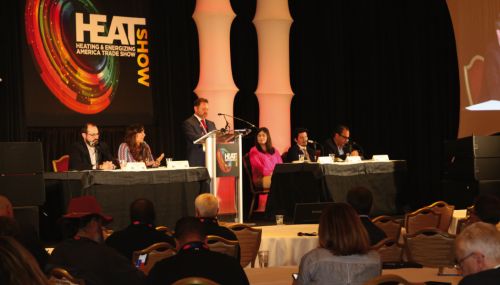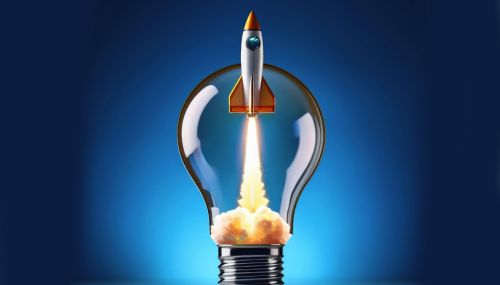Ed Burke looks at transportation policy
By Ed Burke, Dennis K. Burke Inc.
While New England was getting battered with snowstorm after snowstorm, down in Washington Congress was having a tough time finding common ground with several of the Administration’s policies and proposals.
Our nation’s infrastructure system is critical to our national security, our economy and our quality of life. Here is a look at what’s happening… or not happening.
The Highway Bill
Last month, the President unveiled a $478 billion, six-year highway and transit bill, which is the latest effort to boost infrastructure through new taxes on foreign profits of U.S. businesses.
The bill would replace an $11 billion stop-gap measure that Congress passed in August to keep the Highway Trust Fund solvent through the end of May. A fix is needed soon, or states will start delaying some summer road repairs before May, if they don’t have a clear sign that the funding will be there.
Members of Congress are calling for a multi-year surface transportation reauthorization bill, and not another series of short-term extensions. Congressional leaders say that tax reform could fill the gap between the Highway Trust Fund and infrastructure costs. Although it’s not a popular position, a bill to increase the gas tax has been introduced.
During the past six years, Congress has transferred nearly $70 billion from the general fund into the Highway Trust Fund to keep the road repairs going with dozens of short-term funding measures.
Imports And Exports
How does infrastructure affect the supply chain? In a hearing with the Senate Commerce Transportation Subcommittee, industry representatives discussed the importance of a reliable and efficient supply chain to global economic competitiveness.
In that discussion, a representative of Cargill detailed the millions and millions of dollars in meat exports that are being lost due to port congestion on the West Coast.
A BNSF railroad spokesman then explained how an 11-day shutdown back in 2002 cost the U.S. supply chain over $15 billion, and some shippers moved their freight elsewhere.
A trade group representative recommended establishing a DOT agency with $2 billion in annual funding that would be dedicated solely to managing freight projects across the country.
Energy Independence
Despite its significance, Washington sometimes overlooks the necessity of energy infrastructure. North America is now the world’s leader in energy production. This transformation greatly benefits the American people by bringing lower energy costs and more jobs. But to fully realize our energy independence, it takes more than just increased oil and gas production. During and after production, our resources need to be moved to our cities and communities. Last winter, harsh weather in the Northeast spiked demand for natural gas, but because of pipeline constraints, the needed supply could not be delivered.
Electric Generation
There’s been strong opposition to a proposal for a new U.S. Environmental Protection Agency (EPA) initiative called the Clean Power Plan, which limits carbon pollution from existing power plants. Electric power generation is responsible for nearly 40 percent of U.S. carbon emissions – making it the largest single source.
A sticking point for most folks is EPA’s projections of higher electricity prices while ratepayers are paying for the huge expenses for the transition. This winter, most Massachusetts residents paid about 37 percent more a month for electricity than last year.
At this point, 32 states have said they can’t comply with the EPA proposal, and 12 have filed lawsuits against the agency.
Streamlining Permits
In February, the House Subcommittee on Railroads, Pipelines, and Hazardous Materials held a hearing on issues related to the U.S. energy boom and its impact on the transportation system.
The subcommittee heard testimonies from energy, pipeline, railroad and rail car manufacturers regarding their investment, and to explain parallels between energy production and private investment.
Industry stakeholders suggest that streamlining the rail and pipeline permitting process could increase investment. A representative from the Carlyle Group discussed how delays can directly impact a project’s bottom line, and that permitting uncertainty makes it more difficult for businesses to secure capital early in the planning process.
The railroads have been investing billions of dollars in expansion. A spokesman for the Association of American Railroads talked about their expansion and outlined ways policymakers can improve the rail permitting process.
We need to move oil and gas around the country safely. Rail offers geographic flexibility in moving petroleum products from new production locations and across routes that lack pipelines, but pipelines offer the safest way to transport large volumes of petroleum products with the least impact on the environment.
A representative from the Interstate Natural Gas Association of America explained the need for new infrastructure to meet continued growth over the next two decades. The projected infrastructure additions for the gas and oil industry are estimated to cost approximately $30 billion annually.
A House bill has been introduced to streamline the pipeline permitting process, as well as a bill to expedite the approval of liquefied natural gas export facilities.
Growth and Jobs
Our energy industries are responsible for some of the the greatest job growth across the country with private investment. Creating infrastructure not only protects job growth, it also opens new markets for American energy at home and possibly abroad, providing even more opportunity for economic growth.





